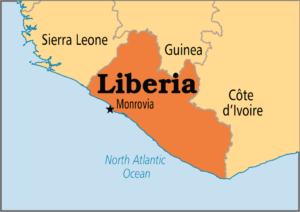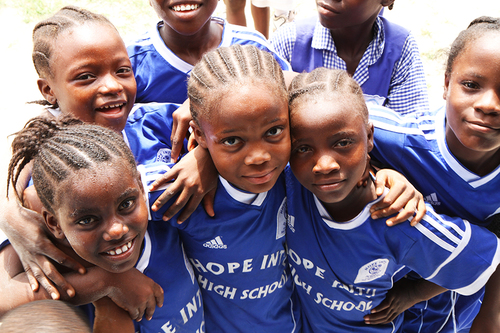
When I first became involved with Project Redwood, the idea of becoming a sponsor seemed almost exotic to me. Grantees mainly seemed to be in distant places I knew little about. How would I ever come in contact with an organization that needed Project Redwood’s kind of help?
Then a possibility landed in my lap. At a workshop, I struck up a conversation with the woman sitting next to me. She was Sally Olson, Board Chair of the Hope Project Liberia.
The Hope Project was started by two families who adopted children from an orphanage in a suburb of Monrovia. When asked what more they could do, the orphanage director, Joseph Cummings said: “We need a school.” With contributions from these families and their friends, the orphanage renovated a building, hired teachers, and admitted 400 students tuition-free.
Liberia, the fourth poorest country in the world, is working hard to recover from a violent civil war from 1999 to 2003 and from an epidemic of Ebola in 2014 through 2015. Over the years, the Hope Project has helped the whole community begin to get back on its feet after this succession of calamities. Here is how they describe their achievements:
“Over the last decade, we have built beautiful things together: educational opportunities, classrooms, dreams, computer and science labs, scholarships, bathrooms, Ebola protections, a well, employment, community health, and most importantly, hope.”
As I listened to Sally, my mental wheels started turning.
Entrepreneurial? Check.
Scalable? Probably. Check.
Potential to build human capital? Check.
Lifting the poorest of the poor out of their extreme poverty? Check.
So the Hope Project seemed like a good fit with the mission of Project Redwood. I told Sally the short version of Project Redwood’s history and described how I saw a possible fit. She agreed and connected me with Jackie Frazier, one of the founders and executive director, and Jackie and I set up a time to meet in Seattle. I was excited but apprehensive. First, we had arranged to meet at Pacific Towers, a looming Art Deco military clinic in south Seattle that rents space to non-profits. It’s big enough that you can see it from the freeway… but still get lost getting there. So I had navigation anxiety.
More importantly, I had looked at the Hope Project website and found it light on facts: no financials, no board bios, no detailed success stories. I wondered if the Hope Project was far enough along in its development to meet Project Redwood’s criteria. Then I looked at the donation page and saw how much impact a few dollars could have. A monthly donation of $65, for example, could pay half a teacher’s monthly salary…and no, there aren’t digits missing from that amount. A Project Redwood grant could make a real difference.
Jackie filled in details about the current status of the school, its urgent needs, the school’s management, and ideas for expansion. We talked about these plans and possible projects.
The most promising project was “Sew More Hope.” With a grant, the school would hire teachers and buy sewing machines and other equipment to begin classes in sewing and entrepreneurship, equipping young (mostly) women to either work for or open a tailoring shop in one of the neighborhood marketplaces. I agreed it showed promise.
Jackie and her deputy director Andrea Britt got to work on the Preview Letter, an introduction to the organization and the project. I asked questions, suggested areas for elaboration and kept asking myself, “Is there something I’m not seeing? Some flaw, some failure of analysis, some question I haven’t thought of? Am I asking good MBA questions?”
Despite my anxieties, The Hope Project was invited to submit a complete application. Once again, I tried to help shape the information to tell the “Sew More Hope” story in the most compelling way. Our liaison, James Lavin, sent a few questions and Jackie and Andrea were quick to respond.
As I write this, we know the Hope Project has made it to the final cut. Ballots have been sent and returned, the Grant Review Committee has made its recommendations to the Board, and the Board met last week, intending to make a decision.
I don’t know when the results will be announced. The Hope Project’s chances depend on the partner vote, the GRC’s recommendation, and the Board’s decision, taking into account how each project fits into PRW’s portfolio of grantees, and PRW’s ability to fund the chosen projects.
So we wait.
Even if the Hope Project doesn’t receive a grant this year, they have learned new ways to look at their work, and I have started to learn how to encourage and push an organization to present their results and plans in a persuasive way.

what a great story and example of the serendipity that can fuel
opportunity for Project Redwood to engage with early stage NGOs
addressing severe poverty. thanks elizabeth !
How inspiring!
I love this non-profit and just about every cent goes to the school!